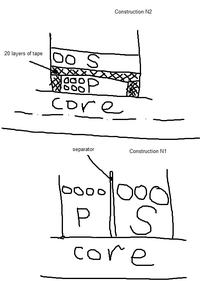skn96
Junior Member level 3

Hello All
I'm working on a new power supply design project. This is a Phase-Shifted Full-Bridge dc dc converter 2.1 kW , 400 V input (from PFC) ,170V output and 200kHz switching frequency seen by output inductor i.e. 100Khz seen by primary . I calculated the needed resonant inductance to be around 17uH. I wanna use a ETD49 with 33 to 24 turns ratio to implement the main transformer. I do not have experience designing transformers before, So my question is
1-Can I expect the transformer to provide 17uH needed resonant inductance for me? I mean can I expect the transformer manufacturer to build it for me so that it comes with 17uh leakage inductance seen from primary? If not how much leakage inductance typically I can expect the transformer to have? Is the any downside to design the transformer to comes with customized leakage inductance (cost/efficiency?)
2-Let's say I have to use an additional inductor as the resonant inductance. Can I find such inductor Off-the-shelf (17uH, 9 amp peak) Or should I consider custom design for this inductor? If both options are applicable what are the trade-offs?
Thanks
I'm working on a new power supply design project. This is a Phase-Shifted Full-Bridge dc dc converter 2.1 kW , 400 V input (from PFC) ,170V output and 200kHz switching frequency seen by output inductor i.e. 100Khz seen by primary . I calculated the needed resonant inductance to be around 17uH. I wanna use a ETD49 with 33 to 24 turns ratio to implement the main transformer. I do not have experience designing transformers before, So my question is
1-Can I expect the transformer to provide 17uH needed resonant inductance for me? I mean can I expect the transformer manufacturer to build it for me so that it comes with 17uh leakage inductance seen from primary? If not how much leakage inductance typically I can expect the transformer to have? Is the any downside to design the transformer to comes with customized leakage inductance (cost/efficiency?)
2-Let's say I have to use an additional inductor as the resonant inductance. Can I find such inductor Off-the-shelf (17uH, 9 amp peak) Or should I consider custom design for this inductor? If both options are applicable what are the trade-offs?
Thanks




